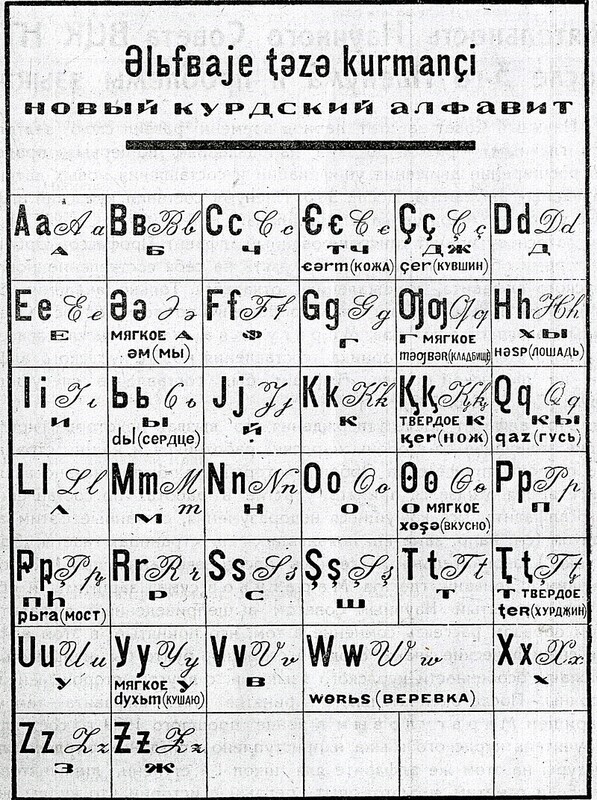Read the second part of this article here
Kurdish Cultural Movement in Russia
We conclude this overview of the Kurdish movement by presenting the cultural position of the Kurds in Russia. In terms of population, the Kurdish population in Russia is very small compared to the Kurdish population in the Middle East; however, in terms of recognizing their rights, the Soviet Union was the only country in the world that recognized Kurdish national rights, and therefore Russian Kurds benefited from literary activities, schools in Kurdish, printing, and radio programs.
Russian researchers and scientists have brought pride to many intellectuals and writers. In Armenia and Georgia, there were primary and secondary schools in Kurdish. In Yerevan, a chair of Kurdology was established at the Armenian Institute of Education, and many textbooks for the use of Kurdish language schools have been published by Armenian Kurdologists in Yerevan. Among them are the works of T. Maragulov and R. Drambjan can be mentioned, and after 1936, Kurdish books were written by Kurdish writers Amine Avdal and W. Nadri, etc. published.

Amine Avdal
Finally, since the beginning of the war two very complete grammars have been published by K. Kuedoev and L. L. Sekerman Published in Yerevan and Moscow.

One of the Kurdish books of the former Soviet Union
The newly created history of Russian Kurdish literature dates back to when the Kurdish alphabet was changed to Latin and included many works in poetry, stories, and novels. In August 1958, it was announced at the Congress of Traveling Students in Europe that more than 1500 volumes of books and articles in Kurdish had been written and published in Russia in the past three years. The most famous Russian Kurdish writers were Arabi Shamo (A. Shamilov), A. Gindi, Lazo, Qasck, Mirad, and Nadri Siwas, most of whom were published in Yerevan. Reya Taze was published twice a week in Yerevan since 1939. Between 1939 and 1954, several books by Kurdish poets and writers were published in Yerevan under the supervision of G. Galil.

Arabi Shamo
In 1922, the Kurdish alphabet was changed to the Armenian alphabet, and then in 1926 to the Latin alphabet by Aissor Marogulov and Arabe Shamo. In 1928, the change was announced.

Kurdish Alphabet Shamo - Marogulov
In 1944 and 1945, the Cyrillic alphabet (Slavic alphabet) with thirty-nine characters (nine vowels and thirty consonants) and developed by writers such as Kapacjan and A. Gindi replaced the Latin alphabet K. Kurdoev in his famous work entitled Grammatica Kurkoyo Jazyka.
He has prepared a comparative table of five types of Kurdish alphabets as follows:
The Arabic alphabet, Cyrillic alphabet 1945, Russian Latin 1927, Syrian Latin, and Iraqi Latin.
We must remember that Russian ethnology is developing rapidly in the cities of Moscow and Leningrad and many Kurdish scholars in different universities are of Kurdish origin.
Sources:
1. CD. Larticle ires dicumente de M.A.Benningsen٫ les kurdes la kurdologic en union sovietique paru dans les cahier du monde Russe et sovietique vol i_i٫ avril_Juin1960.
2. le problème kurde - joyce blau.
3. Geew Mukriani.Dictionaric arabe_ kurde de 15000 mots.
4. cahier N I.Note sur lalphet Kurdc.
5. CF.R.P.Thomas Bios. Op cit PP212_213. CF egalemnt C.J.R.A.C.S. 1954.








